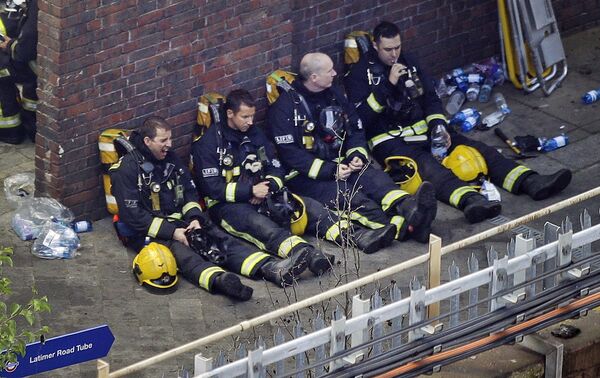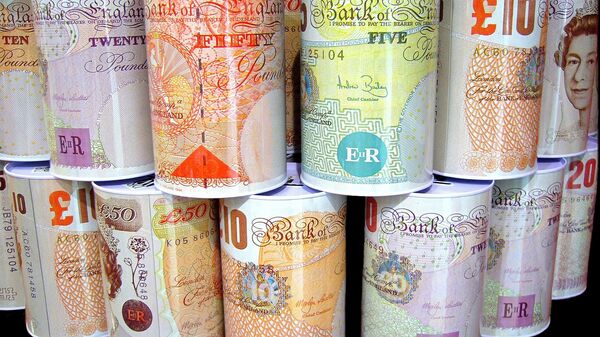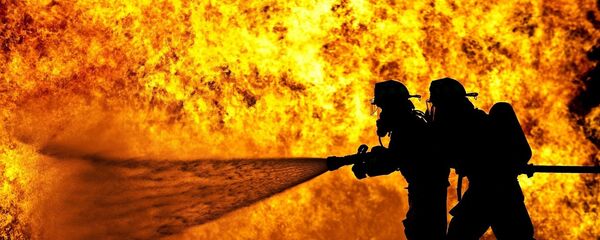Commissioner & officers were amongst hundreds who attended a vigil last night following the horrific #FinsburyPark attack #WeStandTogether pic.twitter.com/0rHcoOWClE
— Metropolitan Police (@metpoliceuk) 20 June 2017
The Metropolitan Police said on Monday (June 19) that 79 people were missing and presumed dead after last week's fire in Grenfell Tower in west London, but the death toll is expected to rise again.
Reports last week suggested the fire began when a refrigerator in a fourth floor flat caught fire.
The resident, Ethiopian-born taxi driver Behailu Kebede, rang 999 when he noticed the flames around 12:54 am on Wednesday (June 14).
But BBC's Panorama documentary, which aired on Monday evening, suggested the initial fridge blaze was extinguished, but as firefighters left the building they noticed the outside of the tower was on fire.
Firefighters put out the fridge fire "in minutes" and were leaving #GrenfellTower when they saw flames outside block, @BBCPanorama reports pic.twitter.com/sKx9yxqtFs
— Claire Phipps (@Claire_Phipps) 19 June 2017
The flames spread rapidly and by 01:15 am had reached the top floor.
Footage has emerged of firefighters racing towards the towering inferno and staring in bewilderment at the blaze. One asks: "How is that possible?" and a colleague says: "How are we going to get into that?"

This morning I have written to the Commissioner of the @metpoliceuk Cressida Dick regarding the Grenfell Tower criminal investigation pic.twitter.com/WwSDoZzwuJ
— David Lammy (@DavidLammy) June 17, 2017
It employed the Rydon Group to carry out the work and they were tasked with putting cladding on the building.
KCTMO is reported to have chosen to use cladding with a polyethylene core rather than a more fireproof alternative.
With bodies still being identified it remains a highly sensitive time for all concerned and few in the insurance industry want to comment on the eventual cost of the disaster.

The Times newspaper estimated the total bill could be as high as £1 billion (US$1.27 billion) but the eventual cost will depend on the number of deaths, the litigation involved, the cost of demolishing the building and the price of rebuilding the tower.
Ironically, Kensington and Chelsea Council, which is the freeholder of Grenfell Tower, changed its insurer in March.
Kensington, and two other boroughs — Westminster, as well as Hammersmith and Fulham Council — switched from Zurich, the giant Swiss company, to Protector Forsikring, a Norwegian company with a UK office in Manchester to save money.
Protector Forsikring have 85 staff handling claims 'to be assured of quality' according to their www. Going to be busy at #GrenfellTower https://t.co/NaLYGDYdMv
— Mike Williams (@MWilliams_UK) 18 June 2017
Protector Forsikring was reportedly charging a much lower annual premium.
The Oslo-based company said last week: "As the insurance provider for Royal Borough of Kensington and Chelsea, Protector Forsikring ASA is involved in the tragic fire in Grenfell Tower.
"Our thoughts go to the people who lived in the building and their families. Protector will work closely with the local authorities and rescue teams."
The company said the cost could be covered by its reinsurance program and its shares fell only marginally on the Norwegian stock exchange.
Reinsurance is the process by which insurance companies insure themselves against enormous losses.
@MunichRe leads Grenfell Tower reinsurance, fire loss seen at £25m+. #reinsurance #news emails from https://t.co/EL53wNcIHV
— Reinsurance News (@NewsReinsurance) 15 June 2017
In the case of Protector Forsikring, its reinsurer is believed to be the giant German company, Munich Re.
The Grenfell Tower fire is set to be the largest ever insurance payout in Europe and one of the biggest globally.
The 9/11 attacks in New York in 2001 are thought to have resulted in over US$6 billion being paid out, much of it to the owner of the World Trade Center, Larry Silverstein.
But when all the money paid out to the airlines and the victims of the plane crashes were included the sum was closer to US$40 billion.
Last year a wildfire in Fort McMurray, Alberta ended up costing Canadian insurers US$2.7 billion.
Other huge insurance payouts included the Joelma Building fire in Sao Paulo, Brazil, in 1974, in which more than 180 people died. That was caused by a faulty air conditioning unit.
#HongKong history: Remembering the Garley Building fire 20 years on https://t.co/C73ZPB7Llo pic.twitter.com/1sqVAfmnLL
— SCMP News (@SCMP_News) 20 November 2016
In November 1996 the Garley Building in Hong Kong went up in flames, killing 41 people. The cause was a stray spark from a welders' torch but bamboo scaffolding used inside the building was one of many aggravating factors.
The worst fire in Europe prior to the Grenfell Tower inferno was a blaze at the Lame Horse nightclub in Perm, Russia, in 2009, which killed 156 people.
Although the death toll was higher, the total insurance payout was less because of the lower value of the building.
In 1947 a fire at the Karlslust dance hall in Berlin killed 81 people.
A disco in Gothenburg caught fire in 1998, killing 63 young people.



